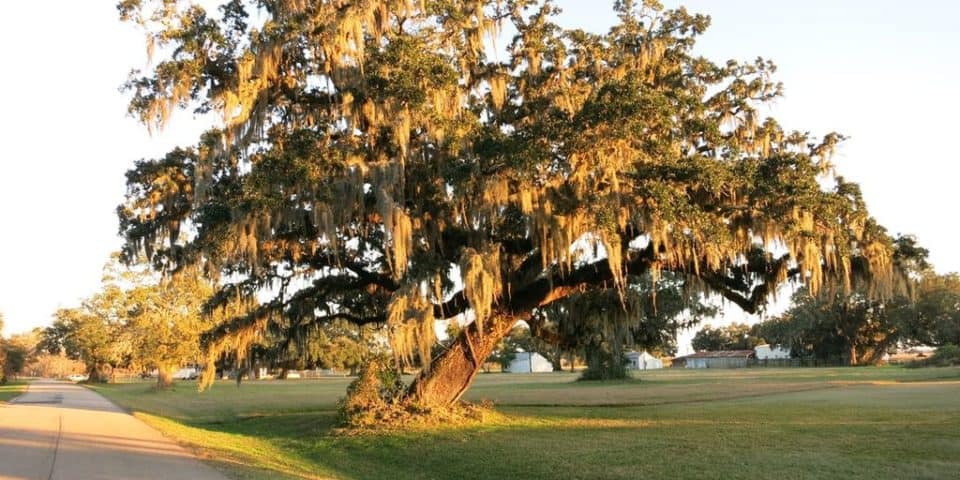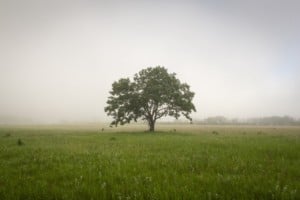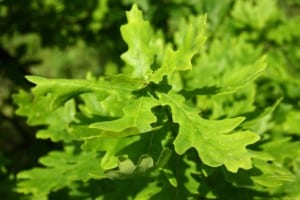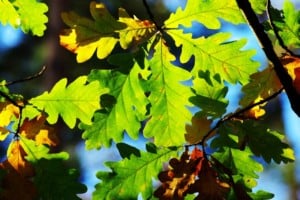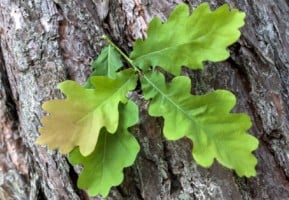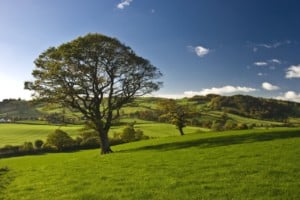Because of its warm climate, Texas is the perfect place to find tall, beautiful trees. In fact, the state is home to trees such as oaks, cottonwoods, sycamores, cypresses, and dozens of others. From the eastern part of the state with its humidity to the drier parts in west Texas, you’ll see a lot of trees wherever you go.
Contents
Oak trees are majestic trees that are usually quite large, and the wood from these trees is often used to make furniture because it is some of the hardest types of tree wood. There are roughly 600 species of oak trees, and they belong to the genus Quercus. They are part of the beech family Fagaceae, and about 90 of the 600 species can be found in the United States.
Oak trees have nuts called acorns, which take 6 to 18 months to mature, and the wood is not only very strong, but is also resistant to insect and fungal attacks. Because of this, the wood from the oak tree is frequently used as timber, furniture, flooring, and even wine barrels. Some of the most popular types of oak include the northern red oak, live oak, and the white oak. The types of oak trees found in Texas are described below.
1. Bur Oak (quercus macrocarpa)
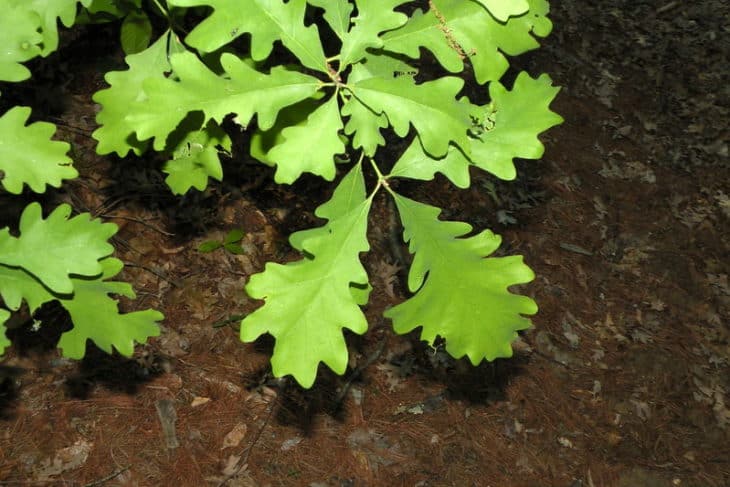
Also called the mossycup oak, the bur oak is a large tree that grows up to nearly 100 feet in height, and on rare occasions it can get to 160 feet. This is a massive tree because the trunk gets up to 10 feet in diameter, and it is a slow-growing tree as well. The bur oak usually lives for 200 to 300 years, but it is possible for them to live to be 400 years old.
The bur oak also has large acorns that can be two inches in length. It sometimes hybridizes with other trees, including the overcup oak and the white oak.
2. Live Oak (quercus virginiana)
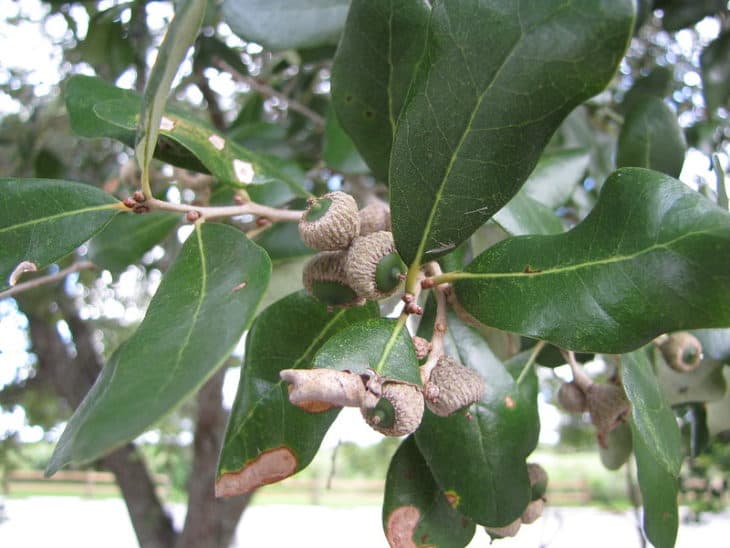
The live oak tree is also called an evergreen oak, and it is called “live” because it does not stay dormant and leafless in the winter but instead continues to grow. These trees have low-hanging branches and a short stature and, therefore, the wood is often used to make curvy-shaped parts of the hull of a boat, specifically the parts called knee braces.
Today the wood can also be used to make tool handles and in shipbuilding, but rarely to make furniture because it tends to twist and warp when it’s drying.
3. Nuttall Oak (quercus texana)
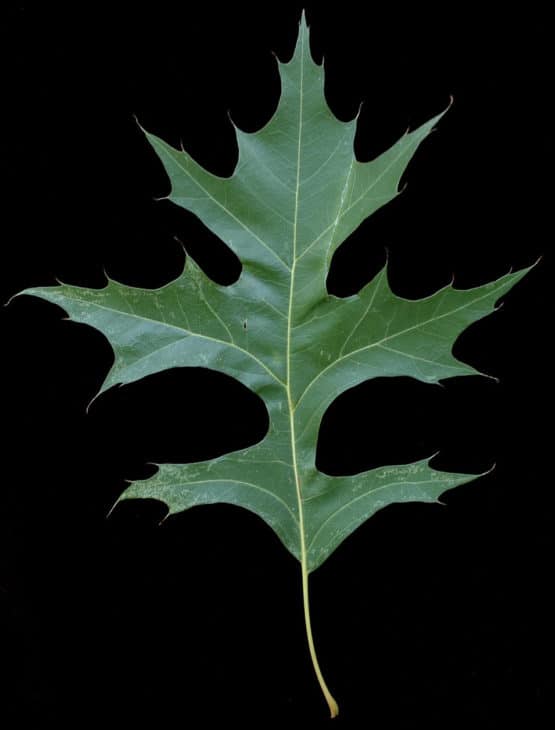
The nuttall oak grows fast and is native to the south-central part of the United States. It grows to roughly 80 feet in height and has dark-brown bark. Its leaves have sharp points just like some other types of oak trees, and it is different from the Texas red oak, which is now called the quercus buckleyi.
One of the most significant traits of the nuttall oak is its beautiful red fall colors and its ability to grow well in wet soils.
4. Post Oak (quercus stellata)
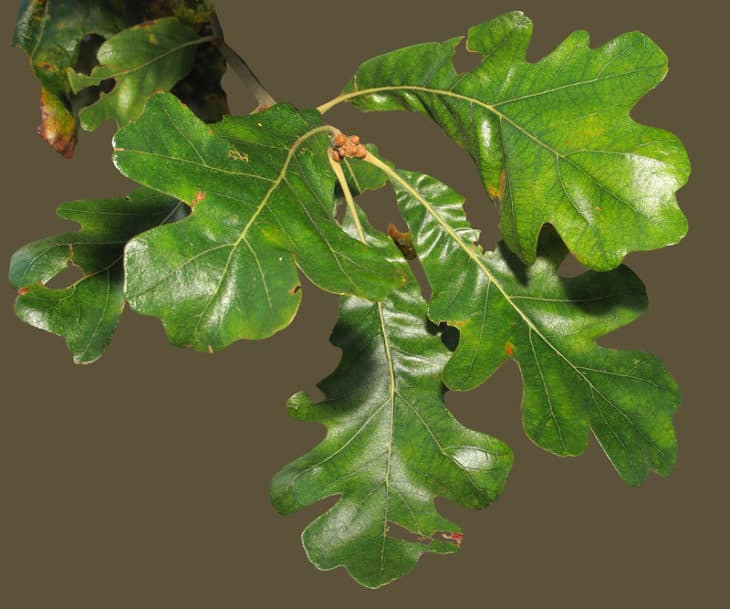
Also called the iron oak, the post oak tree is slow-growing but also easy to grow, in part because it is able to grow in poor soils and is resistant to drought, rot, and fire. Smaller than other oak trees, the post oak typically only gets to about 30 to 50 feet tall. The leaves are very distinct and have a Maltese cross shape, and the acorns are less than an inch in size and mature during the first summer.
There are numerous varieties and hybrids of the post oak, and the wood is used to make railroad ties, stair risers, flooring, and even fence posts.
5. Shumard Oak (quercus shumardii)
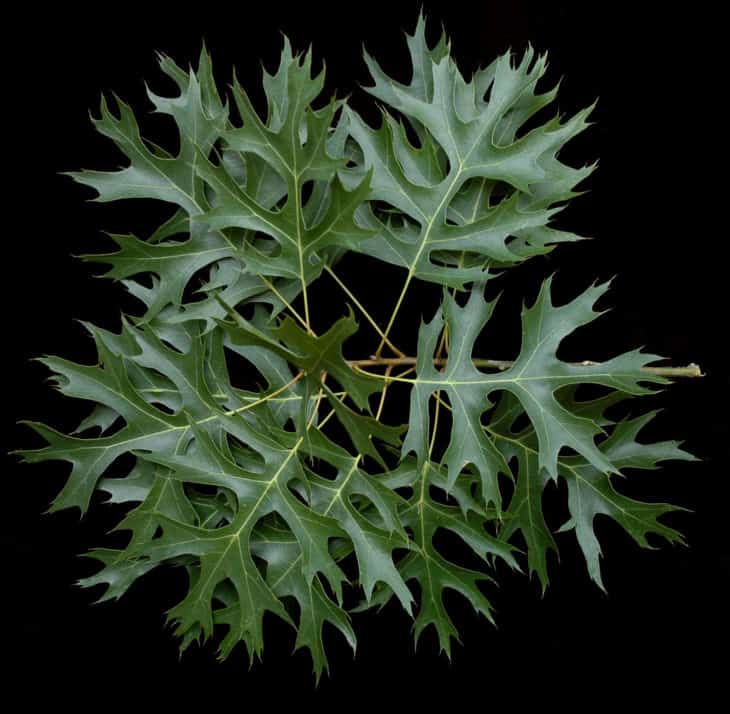
This tree is also called the spotted oak and the swamp red oak, and it grows 80 to 115 feet high. Some of the tallest of these trees have gotten to 200 feet, in fact. It is also a very sturdy type of oak, being able to live in lowlands and even in soils that experience a lot of flooding. The bark of the tree is a little different than the bark of other trees because it is smooth and very reflective.
Shumard oak trees produce large acorns that are one inch in diameter, and the nuts provide nourishment for a variety of animals, including birds, waterfowl, and deer.

